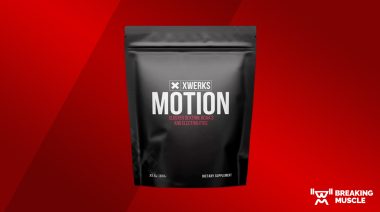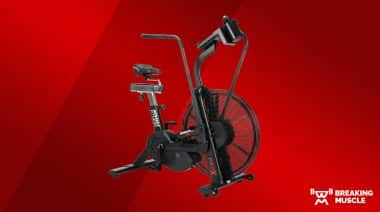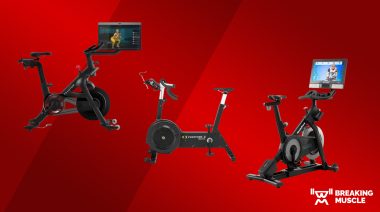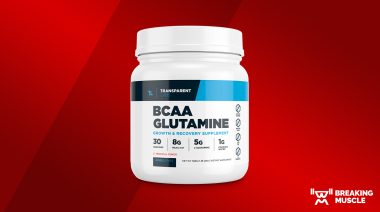Pulse Beat Fit receives no compensation in exchange for reviews. We received this product for free and did not experience typical customer service. The opinions expressed belong solely to the writer.
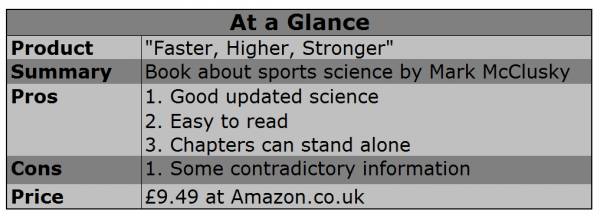
Today we have the mixed blessing of an abundance of information. Never has it been easier to get answers to our athletic questions. However, it’s also never been easier to get the wrong information.
In the book Faster, Higher, Stronger, named for the motto of the Olympic Games, Mark McClusky details the science that makes our athletes ever better.
“Faster, Higher, Stronger”
Mark McClusky is the editor of Wired and previously an editor and reporter for Sports Illustrated. His experience has certainly given him his writing chops. That experience shines through in this book, which is smooth, easy to read, and highly informative.
“The information covered in ‘Faster, Higher, Stronger ‘deals with science you could have read in the last year, rather than the last few decades like many books you may see.”
Each chapter begins with a story about an athlete, team, or event, which leads into a discussion of some major topic of athletics. McClusky weaves through each story, making the book a smooth and page-turning read.
About the Book
I’m pleased to report that the science in this book is refreshingly updated. The information covered in Faster, Higher, Stronger deals with science you could have read in the last year, rather than the last few decades like many books you may see.
The chapters are divided into how the specific changes to materials, science, coaching, or other methods affect sports. There is no focus on a given sport, and the book discusses many different types of athletics. Rather, it is about the athletes themselves. Here’s a glimpse at the topics covered:
- Chapter 1: How science shapes coaching, and how each individual athlete is shaped for optimal performance.
- Chapter 2: Genetics in athletics, including how they affect men and women differently.
- Chapter 3: Nutrition and supplement science.
- Chapter 4: Talent identification, how your age and maturity affects sports, and how the school of hard knocks can provide a good athletic education.
- Chapter 5: The famous 10,000 hour rule, and how it applies to sports. Also discusses athletes moving from one sport to another.
- Chapter 6: Motor learning and how to best shape practice.
- Chapter 7: How changes to materials in sport, like the size of a ball, profoundly alter the outcomes.
- Chapter 8: The old and new science of the theories of fatigue: why an athlete actually gets tired. It may not be what you think.
- Chapter 9: Sleep, travel, and recovery.
- Chapter 10: Using Information Age data to shape how we engage in sports.
- Chapter 11: Performance enhancing drugs.
- Chapter 12: The limits of human potential. Do they exist, how can we tell, and are we there yet?
As you can see, virtually every aspect of sport science is covered in detail. The chapters are fairlyà la carte, so you can pick up the book and read any chapter that interests you without needing to have built on the earlier parts of the book. This makes it a handy reference guide with easy-to-find information and history on each of the above topics. However, since all of the chapters are important, I think you will find yourself reading the entire thing from cover to cover.
It takes a special author to be able to take science and make it readable and understandable to the non-scientist. I think most people will find this book does so successfully. I personally love reading science, even the dry stuff, but McClusky makes it easy in this book. The narrative flows naturally and stays on any one topic just long enough to get the point home.
Considerations
In any book based on the discussion of science there will be some contradiction. The same is even more true with an in-depth look into coaching strategies, which can vary hugely from team to team. Faster, Higher, Stronger, discusses both topics, so you may spot some of those contradictions.
“It takes a special author to be able to take science and make it readable and understandable to the non-scientist. I think most people will find this book does so successfully.”
As an example, the first chapter deals with developing an athlete based on what needs to change at the smallest levels. In other words, training an athlete like a scientist might. Later in the book is a chapter focusing on how the best training methods involve randomness and specificity to sport conditions. These two discussions might beg the question: am I better off honing in on the details or should I put in more practice time? The book leaves the answer up to you.
My Recommendation
Faster, Higher, Stronger has a huge amount of information for coaches and athletes in any sport. Even the unanswered questions may stimulate the future generation of authors to write the next series of amazing books like this one. Faster, Higher, Stronger should be in the collection of anyone serious about athletics.
“Faster, Higher, Stronger” is available from £9.49 at Amazon
Check out these related articles:

